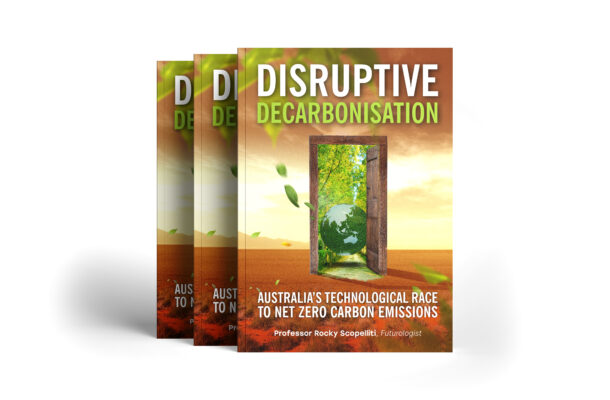Investing in the future: unlocking the economic potential of net-zero transformation in Australia

The clock is ticking, and the world is facing an accelerated climate change that requires immediate action. Australian organisations need to take responsibility and increase their capacity to adapt to this new reality, or risk falling behind and facing exponential lag.
The Australia 2030 Research© in my new report ‘Disruptive Decarbonisation’, highlights the need for urgent investment decisions to meet the 2030 carbon emissions target of 43 percent, which is only a few years away. The longer they delay, the harder it will be for them to reset onto the necessary trajectory to reach their net zero target by 2050, and this poses investment risks for the forecasted $20 trillion of capital required by 2050.
One of the major decision-making barriers for board directors and chief executives is the lack of clarity around the benefits and ROI of their environmental programs, which stifles investment decisions. However, the timing for those investment choices is now. The ‘To Do’ Checklist in my report is a helpful guide for organisations to establish environmental strategies, policies, and programs, undertake investment, establish emissions baseline, integrate their strategic and execution considerations, and shift to strategy-driven environmental goal-setting maturity.
Chief Information Officers have the necessary leadership and skills to navigate the complexities of these environmental programs, as they are data and technology-intensive with highly fragmented and diverse sources and require major organizational transformations. They will be able to orchestrate such a transformation of this scale by expanding their responsibilities two-fold – vertically creating Systems Leadership outside the organization, and within the organization, becoming the Environmental Enablers horizontally.
The prize for this systems leadership-driven approach could see an economic gain for net-zero transformation in the order of $890 billion added to Australia’s GDP by 2070. Australia has a remarkable history of innovation and needs to remind itself how important it is to both look to and trust the future. With the next generation of high value-adding emerging industries, Australia has a real opportunity to invest in the high value-added pre- and post-production stages of existing and emerging industries to create new economic value.
The optimism among younger demographics about the speed of technological and scientific change required to support Australia’s environmental goals over the coming decade provides a cultural advantage that could deliver a dividend as Australia transitions into a low carbon economy. It is time for organisations to take action, invest in their environmental initiatives, and create a sustainable future for generations to come.
Rocky Scopelliti is a world-renowned futurologist. His pioneering behavioural economics research on the confluence of demographic change associated with Millennials, and digital technology, have influenced the way we think about our social, cultural, economic and technological future. His book ‘Youthquake 4.0 – A Whole Generation and the New Industrial Revolution’ was launched globally in 2018 and is now published in Chinese, Vietnamese, Indonesian and Korean languages. As a media commentator, his unique insights have featured on SKY Business News, The Australian Financial Review, ABC Radio National, The Economist, Forbes and Bloomberg. As an international key note speaker, his presentations have captivated audiences across Asia Pacific, the USA and Europe including Mobile World Congress. As a thought-leading Chief Juvenescence Officer, over 150 boards and leadership teams, including Fortune 100 corporations, each year seek his advice on strategy, emerging technologies and their future impact. A distinguished author, his 15 thought leadership research publications have become internationally recognised for their influence including the World Economic Forum’s Disruptive Innovation in Financial Services Program.








